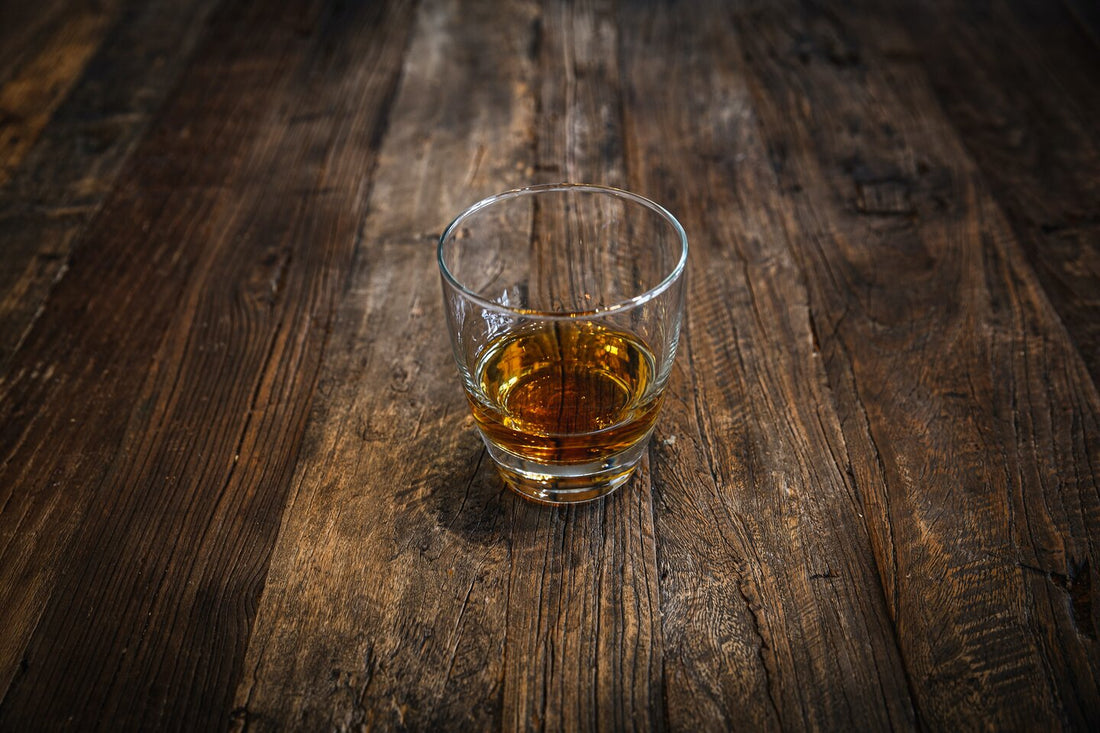
When a black fungus appeared in a small town in Tennessee, residents didn’t think to connect it with the Jack Daniel’s distillery down the road. But, before long, it was clear that the black growth on buildings across town was whiskey fungus. This byproduct of the whiskey making process is making headlines for coating homes, cars, road signs, and plants near whiskey distilleries around the country and the neighbors aren’t happy about it. Here’s what we know about whiskey fungus and whether or not you should be worried.
What is whiskey fungus and how does whiskey fungus grow?
Whiskey-lovers may be familiar with the term the “angel’s share,” which refers to the liquor that evaporates from barrels during the aging process. Traditionally, it was believed that this whiskey evaporated up to the heavens, hence the name. Turns out, a certain fungus likes the “angel’s share” more than the angels: whiskey fungus. This dark, sooty growth feeds on alcohol vapors from barrel-aged whiskey and spreads across any surface it can find.
Though it’s making waves in recent months, whiskey fungus isn’t new. In 1872, Antonin Baudoin, the director of the French Distillers’ Association, noticed a “plague of soot” spreading across the walls around brandy distilleries in Cognac, France. Fast-forward 125 years to James Scott, a scientist and professor at the Dalla Lana School of Public Health at the University of Toronto. Scott’s been studying the fungus since 2001 and named its genus, Baudoinia compniacensis, in honor of Baudoin.
Whiskey fungus makes headlines
For months, residents of Lincoln County, Tennessee, a neighboring county to the Jack Daniel’s distillery, have been tackling the sooty crust spreading across nearby towns. It’s appeared on the siding of homes, bird feeders, trees, and outdoor furniture and seems to be spreading uncontrollably. Some residents clean their homes with power washers and bleach, but the fungus grows back within a matter of months. Now, they’re taking the matter into their own hands. The owner of a Lincoln County wedding and event venue, Christi Long, sued the county in January, arguing that the Jack Daniel’s barrelhouses near her property lacked the proper permits. On March 1, the court ordered Jack Daniel’s to temporarily halt construction on a new barrelhouse.
A small town in Maine is facing similar issues. Wiggly Bridge, a small-scale distillery in York, Maine, planned on expanding its operations by building two additional rickhouses in a residential neighborhood. Then, spots of dark mold started appearing around town, stoking fears in town residents. Expansion of this local production is on pause for now while the town planning board evaluates whether or not the mold is indeed whiskey fungus.
Should I be worried about whiskey fungus?
Unless you live near a large-scale whiskey distillery, like Jack Daniel’s, there’s likely nothing to worry about. According to Scott, the amount of fungus in a given area correlates to the size of the distillery and the amount of aging spirits. Baudoinia can be found 100 or 200 yards from distilleries with 20,000 to 30,000 barrels in storage and for sites with more than 1 million barrels, the radius can stretch up to 2 or 3 miles. Most small-scale operations housing 5,000 to 10,000 barrels aren’t causing any problems, says Scott. “If they have any growth, they would be limited to the immediate adjacent growth.” All the more reason to support small-scale distilleries.
Small-batch whiskeys are RackHouse Whiskey Club’s bread and butter. If you want to explore high quality craft whiskey with an interesting story behind it, check us out. RackHouse scours the U.S. looking for the best craft distilleries with the most interesting stories to curate a unique subscription box filled with full-sized bottles of hard-to-find small batch whiskey. We’re building a community of premium craft whiskey drinkers. And you’re invited! Join us!









